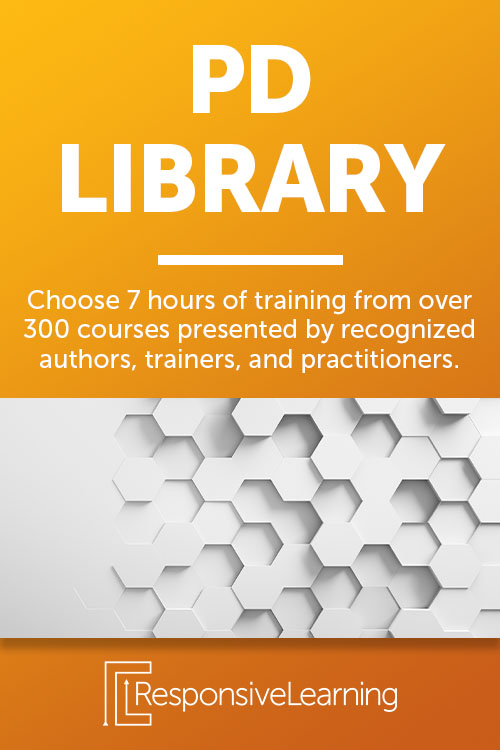As a special education teacher, it’s essential to ensure all students with disabilities receive an individualized education program (IEP) that meets their specific needs and goals.
An IEP is a document that outlines the accommodations, supports, and services a student needs in order to be successful in school. It is a legally binding document that is developed by a team of professionals, including the student’s teachers, parents or guardians, and other service providers as needed.
So, how can special education teachers create effective IEPs that truly meet the needs of their students? Here are some top tips to consider:
1. Involve the student in the process.
Involvement in the IEP process is an important aspect of ensuring the IEP reflects the student. For older students who are able to participate in the discussion, it’s particularly essential to involve them as much as possible. Remember, however, that younger students are not exempt from the process.
If you think a younger student or student who struggles with communication has no opinion about their future, you’re wrong. Try student surveys with pictures or visual supports, like this one, to reach and include them. By doing this, the IEP will reflect the student’s own goals and needs, and they’ll feel invested in their own education.

There are a number of ways to involve the student in the IEP process. For example, you can ask them to participate in the initial assessment process, to help identify their strengths and areas of need. You can also involve them in the goal-setting process, by asking them to identify their own goals and objectives, and by involving them in the decision-making process when it comes to selecting strategies and supports. Or, you can use surveys and inventories to gather personal preferences.
Overall, involving the student in the IEP process is an important part of ensuring that the IEP truly meets their needs and goals. By involving them in the decision-making process and providing them with the resources and support they need to advocate for themselves, you can help them feel invested in their own education and success.
2. Include the student’s parents or guardians.
Also, including the student in the IEP process can mean providing them with resources and support to help them understand their IEP and advocate for their own needs. This might include materials or tools to help them understand their rights and responsibilities under IDEA, or opportunities to participate in self-advocacy groups or workshops.
Including the student’s parents or guardians in the IEP process is an important part of ensuring the IEP is tailored to the student’s unique needs and goals. Parents or guardians can provide valuable insights into the student’s strengths, needs, and goals, and can help make sure the IEP is aligned with the student’s overall development and well-being.
Involve parents or guardians in the IEP process as early as possible, and keep them informed throughout. Holding regular meetings to discuss the student’s progress, goals, and needs, and to get input from the parents or guardians is one way. Another is reaching out periodically to speak with families and get regular updates.
It is also important to provide materials and resources that help the parents or guardians understand the IEP process and their role in it. They should be treated as equal members of the IEP team. They should not only be informed of decisions that have already been made. This means having the opportunity to participate in the decision-making process and to express their views and concerns. By treating parents or guardians as equal members of the IEP team, a student’s individualized plan will reflect their support network and be tailored to the student’s unique needs and goals.
3. Consider the student’s strengths and needs.
Equally as important is coming to a consensus on and considering the student’s strengths and needs. It’s an essential part of creating an effective IEP. To do this, take a holistic approach that considers the student’s overall development and well-being, rather than just their academic skills.
Start by taking a look at the student’s academic skills, including their strengths and areas of need. This may involve reviewing their grades, test scores, and other data to get a sense of their current level of performance and areas of growth. Then take a look at their functional skills. This includes their social and emotional development, communication and vocational skills, as well as their physical and sensory abilities.
Since a student has a disability that will impact their ability to learn throughout their life, it’s important to look beyond the classroom. This might include things like their home environment, access to resources and support, or any medical or health concerns.
By taking a holistic approach, you can ensure the IEP addresses the student’s unique needs and helps them make progress in all areas of their development.
4. Set specific, measurable goals.
Setting specific, measurable goals is an important aspect of creating an effective IEP. These goals should be tailored to the student’s individual needs and abilities, and they should be based on their current level of performance and their potential for growth.
To be effective, these goals should be specific and measurable, rather than general or vague. For example, instead of setting a goal of “improving reading skills,” you might set a goal of “reading at a third-grade level by the end of the school year.” This specificity and ease of measurability gives you a clear target to work towards and allows you to track the student’s progress over time.
In addition to being specific and measurable, it’s important for these goals to be challenging, but realistic. They should be ambitious enough to push the student to grow and improve over the term of the IEP goal, but should also be achievable given the student’s current abilities and available resources.

Finally, it’s essential to include a plan for how the goals will be achieved in the IEP. This might include strategies for reinforcing learning, providing additional support or resources, or modifying the curriculum as needed. It’s possible your teaching team will need extra training to learn the strategies that will best support students. Either way, you need a plan. By including a clear plan for how the goals will be achieved, you can ensure that the student has the support and resources they need to reach their full potential.
5. Provide necessary accommodations and modifications.
Providing necessary accommodations and modifications is an essential part of creating an effective IEP for students with disabilities.
Accommodations are changes to the way a task is presented or completed that does not change the content or expectations of the task but allows the student to access the curriculum and participate fully in the classroom.
Modifications, on the other hand, involve changing the content or expectations of a task to meet the student’s needs.
The IEP should include a list of accommodations and modifications that the student needs in order to access the curriculum and participate fully in the classroom. These may include things like extra time on tests, the use of assistive technology, or modified assignments. It’s important to ensure that these accommodations and modifications are provided consistently and as needed to support the student’s success.
To determine which accommodations and modifications are necessary for a student, it is crucial to consider their individual needs and abilities. This may involve gathering data from a variety of sources, including assessments, observations, and input from the student and their parents or guardians. It’s also important to regularly review and update the list of accommodations and modifications to ensure that they are still meeting the student’s needs and helping them make progress.
Remember, the goal of providing necessary accommodations and modifications is to help students access the same material and opportunities as their non-disabled peers, and achieve their full potential.
6. Review and update the IEP regularly.
Legally, we’re required to regularly review and update the IEP. That’s to make sure it’s meeting the student’s needs and helping them make progress. The IEP should be reviewed and updated at least once yearly, but a more frequent review may be necessary depending on the student’s needs and progress.
During the review process, carefully consider the student’s progress since the last meeting and any changes in their needs or abilities. This may involve reviewing progress reports, assessments, and observations. As a best practice, involve the student, their parents or guardians, and other service providers in the review process to get a more comprehensive view of a student and their performance.
Based on the review, you may need to make adjustments to the student’s goals, accommodations, or other supports. This could include revising or adding new goals, increasing or decreasing the frequency or intensity of supports, or making other changes as needed.
Finally, it’s important to ensure that the IEP is being implemented as intended and that the student receives the necessary supports and accommodations. This may involve monitoring the student’s progress, providing additional professional development for staff members, or taking other actions as needed. By regularly reviewing and updating the IEP and monitoring its implementation, you can ensure that the student is receiving the support they need to succeed in school.
Recap: Creating Effective IEPs
Special education teachers can create effective IEPs that truly meet the needs of their students by following these tips and strategies:
- Involve the student in the process.
- Include the student’s family.
- Consider strengths and needs.
- Set specific and measurable goals.
- Provide necessary accommodations and modifications.
- Review and update the IEP regularly.
By taking a holistic and collaborative approach to IEP development, you can ensure that your students with disabilities have the support and resources they need to succeed in school.
About the Author:

Ayo Jones is an experienced special education teacher, successful instructional coach, and charismatic professional speaker. Driven by her love for all things special education, Ayo provides educators teaching students with significant disabilities exactly what they need to survive and thrive.
In her over 15 years in education, she has coached hundreds of teachers, trained thousands of educational professionals, and developed curricula for tens of thousands of students with disabilities. You can learn more about Ayo on her website, Noodle Nook.







